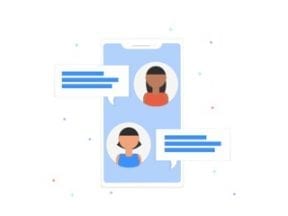“What is web 2.0?” We receive this question often. It likely has as many answers as the number of people using the term. However, since talk of web 3.0 has surfaced in the last year or so, an entirely new level of confusion seems to have set in. In this article, I’ll explain web 2.0 and web 3.0 and how they apply to your ecommerce business.
I’ll start with the challenges that cause people to think in terms of web 2.0 and web 3.0. Since these are buzzwords and not clearly defined terms, think of this as an attempt to describe the ever-changing web. I will borrow from Tim Berners-Lee, director of World Wide Web Consortium and the inventor of the World Wide Web (in 1989). His notion of the “read-write” web is often used to describe web 2.0.
Web 1.0
The first iteration of the web represents the web 1.0, which, according to Berners-Lee, is the “read-only web.” In other words, the early web allowed us to search for information and read it. There was very little in the way of user interaction or content generation.
The first iteration of the web represents the web 1.0, which, according to Berners-Lee, is the “read-only web.”
This was what most website owners wanted. They needed a website to make their information available to anyone at any time. I call this “brick-and-mortar thinking applied to the web.” The web as a whole hasn’t moved much beyond this stage.
Shopping cart applications, which most ecommerce sites use in some form, fall under web 1.0. The overall goal is to present products to potential customers — much as a catalog or a brochure does — to anyone in the world. The web provides exposure. It removes the geographical restrictions associated with brick-and-mortar businesses.
Web 2.0
We are now seeing the infancy of web 2.0, or the “read-write” web as Berners-Lee described it. It’s the ability to contribute content and interact with other web users. It has dramatically changed the landscape of the web in a short time. It has much potential. As examples, look at YouTube and MySpace, which rely on user submissions. Web 2.0 is a welcome response to web users who want to participate in the information.
There are many definitions of a “web 2.0 application.” For example, there’s the perception that just because a website is built using a certain technology (such as Ruby on Rails) or employs Ajax in its interface, it represents web 2.0. But that is not necessarily the case. Web 2.0, for laypeople, simply requires that users can interact or contribute content.
Web 3.0
This leads us to web 3.0 (extending the vague nomenclature). By extrapolating Tim Berners-Lee’s explanations, web 3.0 is “read-write-execute.” This is difficult to envision in its abstract form. To illustrate, consider semantic markup and web services.
Semantic markup refers to the communication gap between humans and computerized applications. One of the biggest challenges of presenting information on the web is that applications cannot provide context to data and, therefore, can’t understand what is relevant. Through the use of some semantic markup (or data interchange formats), data could be put in a form not only accessible to humans via natural language but able to be understood and interpreted by software applications as well.
While it is still evolving, this notion — formatting data to be understood by software agents — leads to the “execute” portion of the web 3.0 definition.
A web service is a software that supports computer-to-computer interaction over the internet. Web services are not new and usually take the form of an application programming interface. The popular photography-sharing website Flickr provides a web service whereby developers can programmatically interface to search for images.
There are thousands of web services. Combining semantic markup and web services can produce a web 3.0 experience — applications that can speak to each other directly and interpret information for humans.
Recommended

Will Web3 Change Ecommerce?
December 24, 2021
Not Obsolete
What’s important is that the naming conventions — web 1.0, 2.0, 3.0 — should not be taken too seriously. Just because a website does not employ web 2.0 features does not make it obsolete. After all, a small ecommerce site trying to sell niche products may not have a business need for users to submit content or to be able to interact with each other.
Moreover, that small ecommerce site does not need to upgrade anything, such as new software. Web 1.0, 2.0, and 3.0 are abstract ideas. They describe challenges that developers (and users) face on the web and how to address them.




